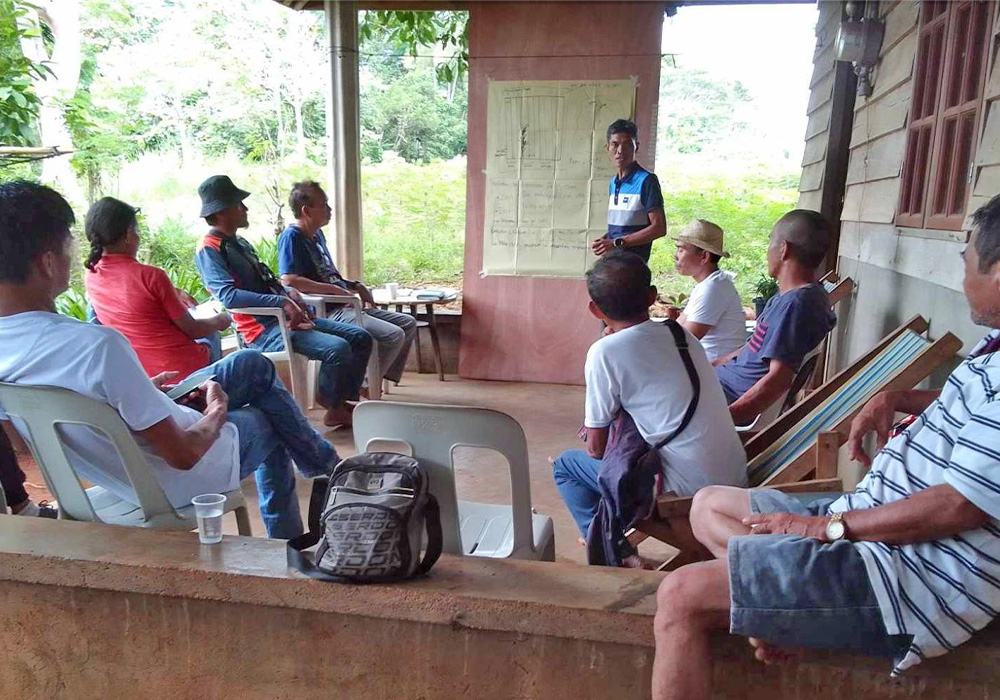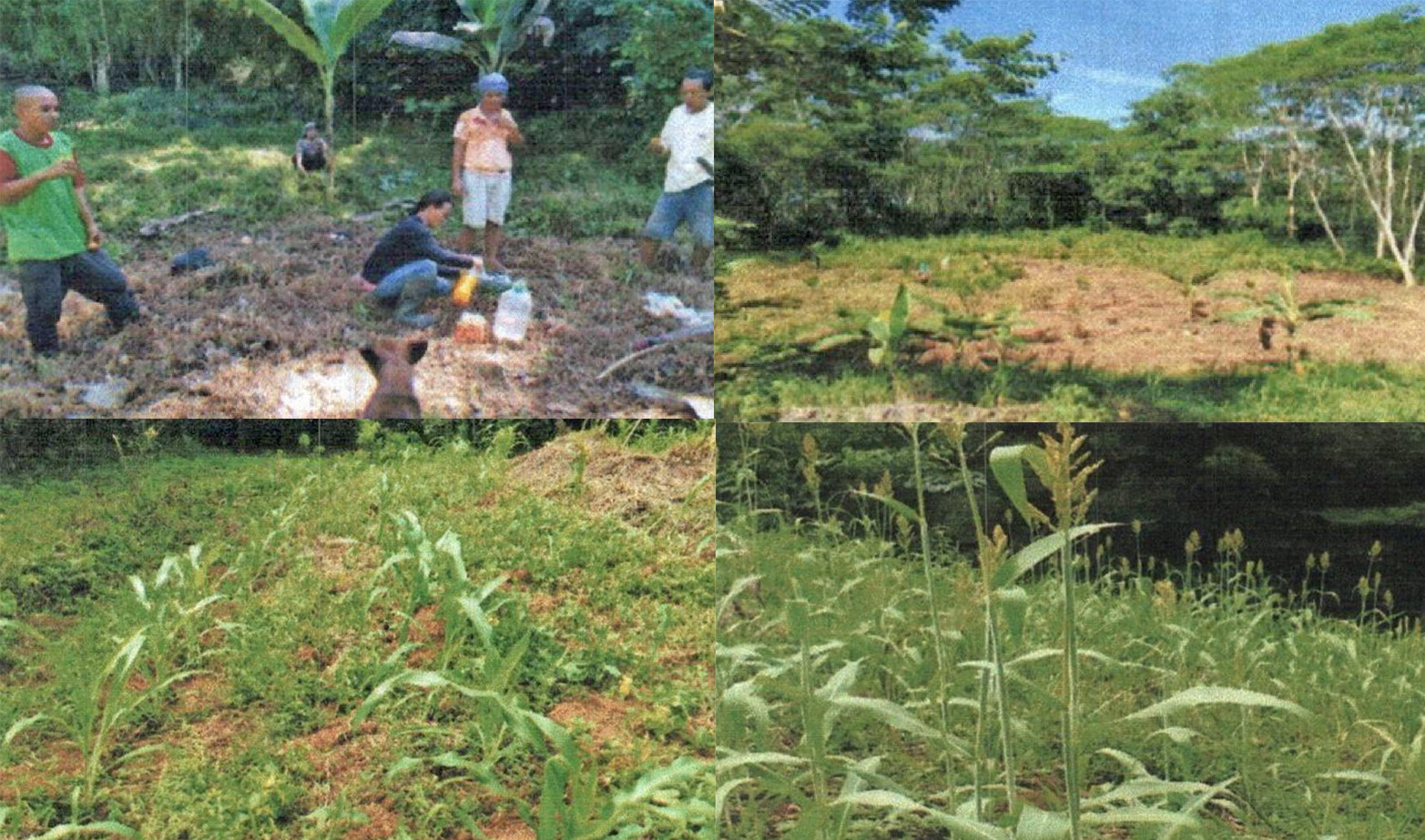
Two days training on the cultural practices of Native corn, Adlai and Sorghum.
- admin
- 29 April 2024
- Feature
Farmers in 2 Bukidnon villages eye self-sufficiency via communal farms
A number of farmers in two villages of Baungon town in Bukidnon – Lingating and Liboran – are now shifting from individual to collective farming, using techniques on integrated farming systems that they have learned through training supported by Samdhana Institute.
The communal farms, currently encompassing a little over two hectares, are being run by three local organizations – Canitoan Eco Farmers Association (CEFA), Hugpong Organikong Mag-uumang Ekonomista (HOME), and a cooperative. The areas are planted with corn, adlai and sorghum as sources of carbohydrates. They are not intended to be sold. To develop self-sufficiency and sustainability, after setting aside a certain quantity of the harvest for household consumption, the farmers use the remainder for animal feeds and as seeds for replanting. Seeds of white corn called “tinigib, ”which are hard to find nowadays, adlai and sorghum are shared among the farmers at no cost. The association also maintains a seed bank.
The farmers plant the crops based on cultural practices that were taught during a two-day training.
Among these cultural practices is the “lapat system, ” a diversified farming system that maximizes the use of small parcels of land through multi-cropping. Here, adlai is planted along the farm perimeter while corn and sorghum are planted at an interval of three plots.

Sorghum, an ingredient for animal feeds, is mainly imported, but is becoming popular due to the conduciveness of local conditions. It is an important crop, as integrated farming means raising livestock like hogs, chickens, ducks and small ruminants, which require feeds. Moreover, like adlai, it can be an alternative to rice as a staple cereal.
The project has noted an increasing involvement among the farmers. Out of the 27 members of the organizations, 15 are now participating in the communal farming activities. For their part, the women are involved not just in tasks like food preparation and logistics but also in the decision- making process.
The concept and practice of organic farming has been shared to the local community. At the Lingating Integrated School, teachers and students have set up a demo farm called “Organikong Gulayan ng Paaralan”. The San Roque Mission Station in Li has also established a demo farm at the back of the church where they have planted corn and eggplant following organic methods and protocols.
There have also been several requests for the production of more foliar fertilizers and insect repellants, as well as farm planning, designing and layouting.
